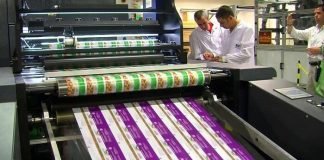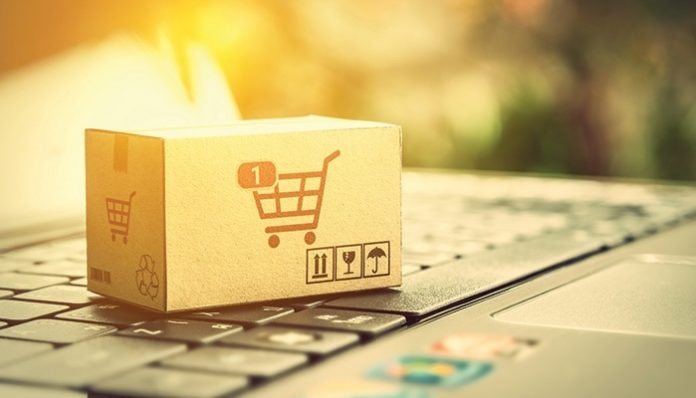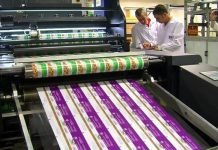In the competitive world of e-commerce, where countless brands are vying for consumer attention, the importance of packaging design in e-commerce cannot be overstated. Packaging often serves as the first tangible interaction between the brand and the customer, providing an opportunity to establish a memorable connection. Beyond merely delivering products safely, thoughtful packaging design can influence customer perceptions, strengthen brand loyalty, and create a lasting impression that extends beyond the initial transaction.
Why Packaging Design is Vital in E-commerce
In traditional retail, brands rely on store displays and various sensory elements to attract shoppers. However, e-commerce transactions lack these in-person experiences, limiting physical interaction to the product and its packaging. This unique challenge makes the importance of packaging design in e-commerce even greater, as it is often the sole vehicle for communicating the brand’s values and personality.
First Impressions and Brand Consistency
First impressions matter, especially in e-commerce. Packaging sets the tone for the customer’s experience and establishes a level of expectation for what’s inside. A well-designed package offers an immediate sense of the brand’s identity and reinforces its values. For instance, if a brand’s digital presence is minimalist and clean, the packaging should echo this aesthetic with simple design, subtle colors, and minimal text. Such consistency across all touchpoints builds familiarity and trust with customers.
On the other hand, inconsistent packaging can create a disconnect. When customers encounter packaging that doesn’t match the brand’s online persona, it can feel jarring and may even erode their confidence in the brand. By aligning the packaging with the brand’s online image, e-commerce businesses can foster a cohesive experience that reinforces brand identity and reliability, underscoring the importance of packaging design in e-commerce.
Creating an Emotional Connection
The right packaging design has the power to evoke an emotional response. Personal touches like a handwritten note, a message on the box, or even customized packaging for individual customers can make them feel valued. When a brand pays attention to such details, it transforms the delivery from a standard transaction to a thoughtful gesture, encouraging loyalty and increasing the likelihood of repeat purchases.
Key Elements of Effective Packaging Design in E-commerce
Effective packaging design in e-commerce requires a balance between aesthetics, functionality, and the overall customer experience. Here’s a closer look at the key components that can make a brand’s packaging stand out, emphasizing the importance of packaging design in e-commerce.
Visual Appeal
The visual appeal of packaging can significantly impact how customers perceive the brand. The choice of colors, fonts, and imagery should reflect the brand’s personality and appeal to its target audience. Bright, bold colors might suit a youthful, vibrant brand, while neutral tones and refined typography might resonate more with a luxury brand.
Cohesive visual design can generate excitement and anticipation for the unboxing experience, enhancing the customer’s perception of the brand. A compelling design doesn’t just look good; it also creates a memorable experience that customers are likely to associate with the brand, strengthening brand recall.
Functionality and Durability
While aesthetics are important, packaging must also serve its primary purpose: protecting the product during transit. In e-commerce, where products often travel long distances, packaging needs to be durable enough to withstand handling and potential impacts. This balance between design and functionality ensures that products reach customers in perfect condition.
Functional packaging also considers the ease of unboxing. Easy-to-open designs, such as pull tabs and resealable options, enhance the customer’s experience by reducing frustration and adding a layer of convenience that customers will appreciate, further proving the importance of packaging design in e-commerce.
The Unboxing Experience
The unboxing experience has become a key part of e-commerce branding, especially as customers often share their unboxing moments on social media. Brands can enhance this experience with small, thoughtful details like branded tissue paper, stickers, or product samples. These elements make the unboxing process feel special, turning it into an event rather than a mere transaction.
This approach not only enhances customer satisfaction but also encourages organic social media sharing, amplifying the brand’s exposure and helping to attract new customers, highlighting again the importance of packaging design in e-commerce.
Designing for Sustainability and Eco-Friendly Packaging
As consumer demand for sustainability grows, eco-friendly packaging has become a significant trend in e-commerce. Embracing sustainable practices in packaging design can elevate a brand’s image and align it with consumers’ environmental values.
Consumer Preferences for Eco-Friendly Options
Today’s consumers are increasingly aware of the environmental impact of their purchases, often favoring brands that prioritize sustainable packaging. E-commerce businesses can tap into this preference by adopting eco-friendly materials and packaging designs that reduce waste. Such an approach enhances the brand’s appeal to environmentally conscious customers, positively impacting brand perception and loyalty.
Sustainable Materials and Packaging Choices
A wide range of sustainable packaging options is available, from recycled cardboard and biodegradable plastics to compostable materials. Selecting environmentally friendly materials not only reduces waste but also sends a powerful message about the brand’s commitment to sustainability.
Some brands reduce their packaging size or offer reusable options, which further decreases waste and appeals to eco-conscious consumers. For example, a brand that values sustainability might use recycled or biodegradable materials while ensuring that these materials align with its aesthetic and functionality requirements, which further demonstrates the importance of packaging design in e-commerce.
The Role of Packaging Design in Brand Storytelling
Packaging design offers a unique opportunity to tell a brand’s story and convey its values. When done thoughtfully, packaging can communicate the brand’s personality and mission, creating a memorable experience for customers.
Storytelling Through Design
Packaging design can convey a brand’s journey, commitment to quality, or focus on innovation. A brand emphasizing craftsmanship might highlight the handmade nature of its products with artisanal packaging elements, while a tech-driven brand might adopt modern, sleek packaging to reflect its innovative spirit.
Typography and Copywriting
Words on the packaging are as essential as the visuals. Clever copywriting can add personality, provide useful information, or even entertain. For instance, playful copy or a heartfelt message can make the unboxing process more enjoyable and enhance the brand’s relatability, highlighting the importance of packaging design in e-commerce.
Enhancing Customer Engagement Through Packaging
Beyond serving as a physical protective layer, packaging in e-commerce can also drive customer engagement by encouraging interaction with the brand post-purchase.
Social Media Integration and User-Generated Content
Brands can integrate social media handles or QR codes into packaging to encourage customers to follow the brand online or share their unboxing experiences. This strategy promotes user-generated content, which can increase brand visibility and create a sense of community among customers.
Loyalty and Rewards
Including extras like discount codes or loyalty points in packaging can surprise and delight customers, encouraging repeat purchases and fostering long-term loyalty. These small gestures go a long way in creating positive associations with the brand and driving customer engagement.
Measuring the Impact of Packaging on Brand Perception and Sales
Once a brand has invested in impactful packaging design, it’s essential to measure its impact on customer satisfaction, brand perception, and sales. This helps brands make informed decisions about future design improvements.
Customer Feedback and Reviews
Customer feedback is invaluable in assessing packaging design. Positive reviews mentioning packaging can highlight aspects that resonate with customers, while constructive feedback can guide potential improvements.
Return Rates and Customer Retention
Analyzing return rates and customer retention can reveal the impact of packaging on the overall experience. Well-designed packaging can contribute to a positive experience, encouraging customers to return and increasing retention rates, demonstrating the importance of packaging design in e-commerce.
Conclusion
In the world of e-commerce, where physical interactions are limited, the importance of packaging design in e-commerce cannot be overlooked. From first impressions to sustainable practices, packaging plays a central role in shaping customer perceptions, building brand loyalty, and enhancing the overall customer experience. By investing in well-thought-out packaging design, e-commerce businesses can differentiate themselves, foster emotional connections, and strengthen their brand presence in a competitive marketplace.
























